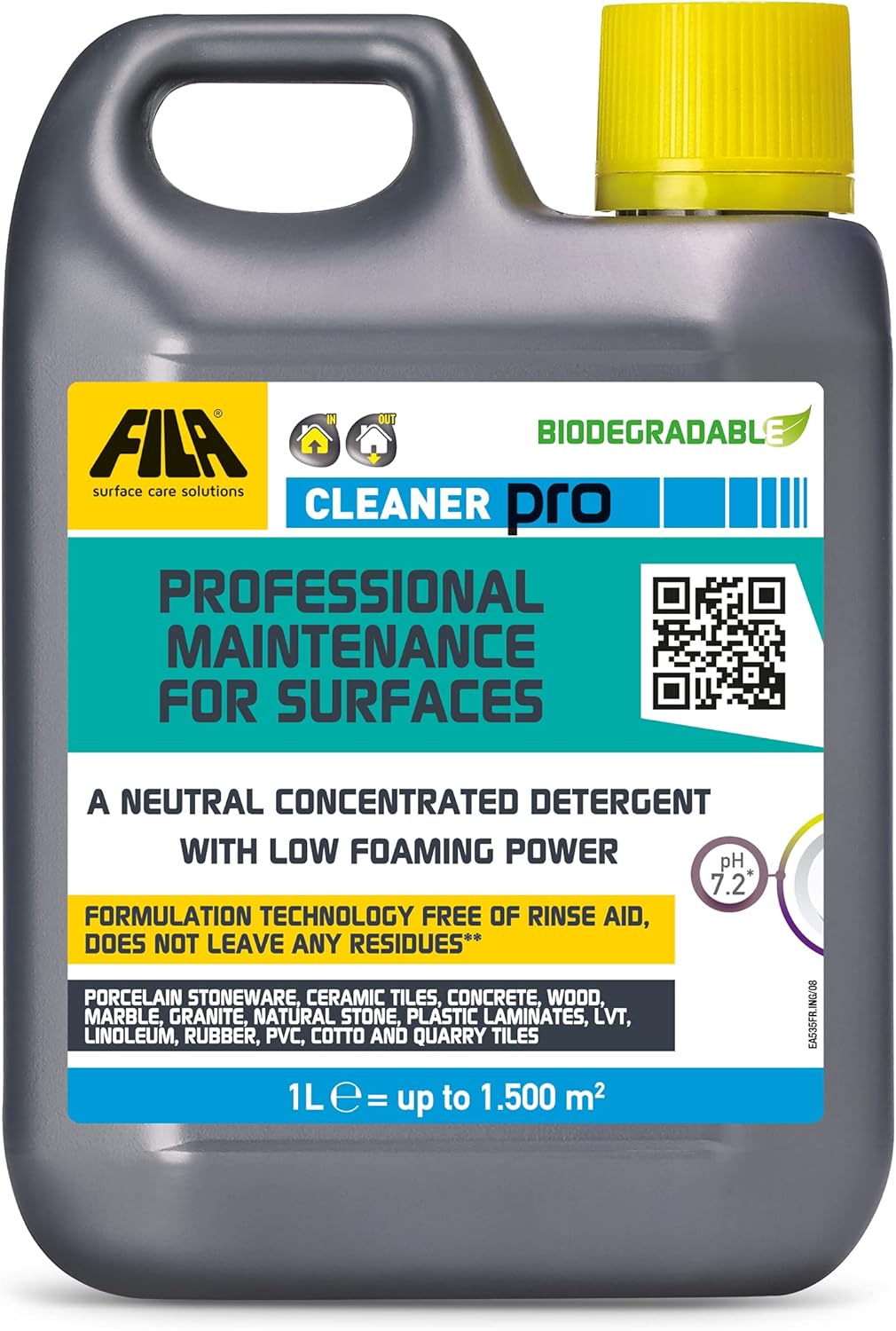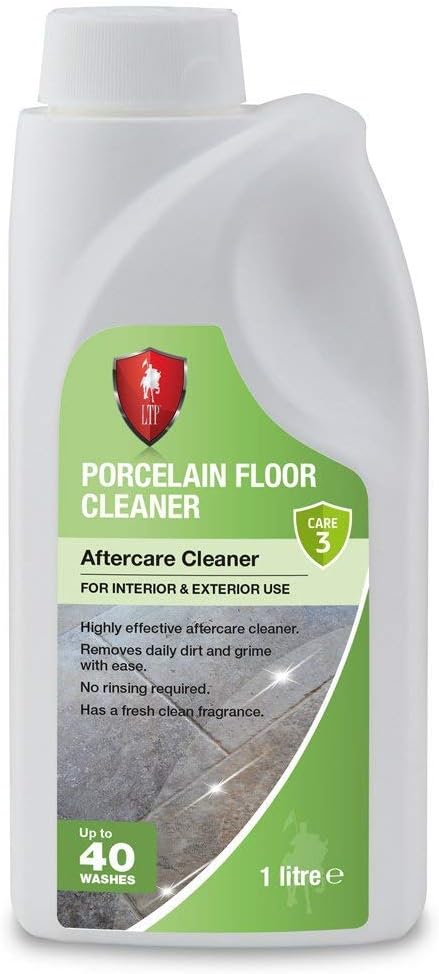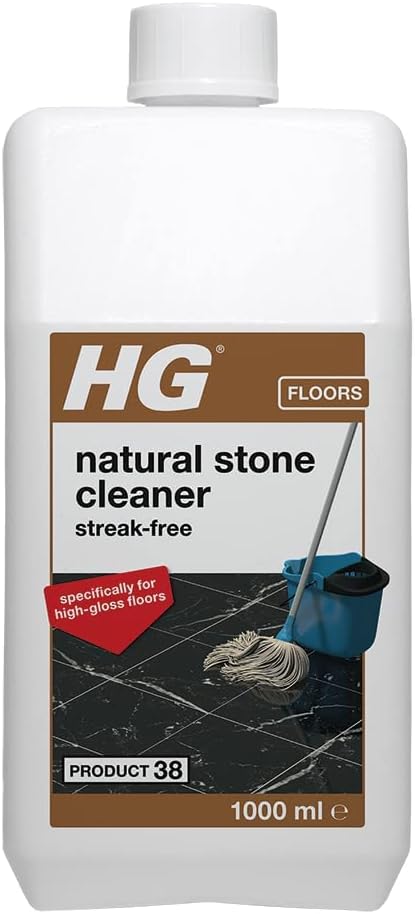Exploring the Intricacies of Marble Restoration Across the UK
marble transcends mere material status; it epitomises luxury and elegance, intricately linked to the architectural heritage of the UK. The historical importance of this magnificent stone is showcased in numerous landmarks, including magnificent stately homes and famous public buildings, where it provides both aesthetic pleasure and serves as a testament to our cultural heritage. The marble restoration in Morden Park exemplifies the dedication to preserving this legacy while making it suitable and accessible for contemporary use. Our investigation into the crucial role of marble restoration in the UK will encompass its historical significance, prevalent causes of damage, and the innovative techniques employed in the restoration process.
Uncovering the Rich Historical Importance of Marble in the UK
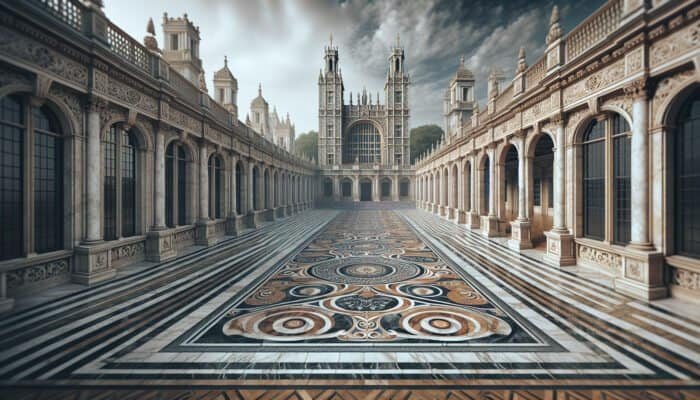
The presence of marble in the UK weaves a vibrant tapestry of history that spans centuries. Renowned structures like the British Museum and Westminster Abbey exemplify the exquisite artistry inherent in marble. These historic sites not only showcase the architectural brilliance of their respective eras but also forge vital connections to our national legacy. The intricate designs and superior craftsmanship evident in these marble installations convey the historical context and the emphasis placed on both durability and beauty. Therefore, marble restoration extends far beyond simple maintenance; it embodies a commitment to preserving our collective history. Each restoration initiative adds a new chapter to our heritage narrative, allowing future generations to admire the artistry and historical significance embedded within these remarkable surfaces.
Identifying Common Causes of Damage to Marble Surfaces
Across the UK, marble floors are subjected to a multitude of environmental pressures that can lead to deterioration. One of the major offenders is weathering, which plays a substantial role in surface erosion, particularly in locales prone to severe weather conditions. The combination of rain and acidic pollutants accelerates this erosion process, resulting in discolouration and jeopardising the structural integrity of the marble. Moreover, heavy foot traffic in high-use areas often leads to scratches and scuffs, detracting from the polished aesthetic of the marble. Recognising these prevalent causes of damage is essential for effective restoration. Acknowledging that the marble restoration process must tackle both aesthetic and structural issues enables restoration professionals to devise comprehensive strategies tailored to the specific types of damage encountered.
Implementing Advanced Techniques for Successful Marble Restoration
The techniques utilised in marble restoration throughout the UK are diverse and require a high level of skill and expertise. The restoration process typically commences with cleaning, which may involve methods such as steam cleaning or specially formulated chemical treatments that effectively eliminate stains without harming the marble. Following this initial step, professionals often engage in honing, a technique that smooths the surface and removes superficial scratches. For deeper flaws, polishing techniques are employed to restore the original shine, rendering the marble as good as new. In cases of severe damage, such as cracks or chips, epoxy fillers are applied to repair and restore structural integrity. These carefully executed methods ensure that the restoration of damaged floors not only meets aesthetic standards but also satisfies functional necessities, safeguarding the intrinsic beauty and cultural significance of the marble surfaces.
Understanding the Regulatory Framework Surrounding Marble Restoration
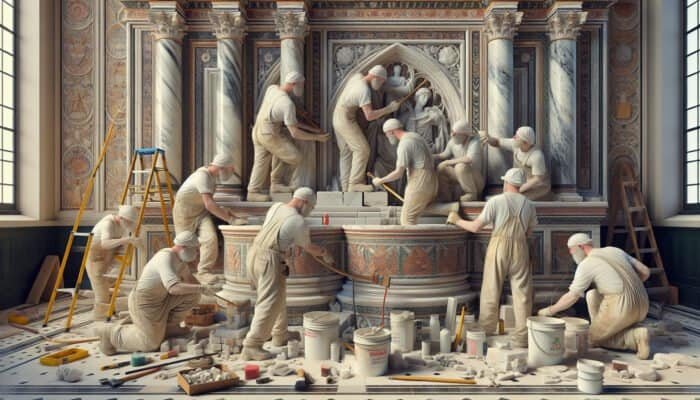
In the UK, marble restoration is governed by a variety of regulations designed to protect the historical integrity of buildings and materials. The Conservation Principles set out by Historic England provide crucial guidelines for restoration efforts, highlighting the importance of maintaining authenticity and historical context. Additionally, local planning regulations often dictate the types of materials and methods permissible during restoration projects. It is essential for restoration companies to grasp these legal frameworks to ensure compliance while safeguarding the cultural significance of their projects, such as the restoration of marble. This adherence not only protects the materials involved but also pays homage to the legacy of the sites themselves.
Exploring Successful Case Studies in Marble Restoration
Examining successful marble restoration case studies across the UK yields invaluable insights into best practices and effective methodologies. For instance, the restoration of the marble floors at the Victoria and Albert Museum involved comprehensive cleaning and meticulous restoration of intricate designs, culminating in a renewed vibrancy that captivates visitors. Another notable project is the restoration of the marble entrance at the National Gallery, where experts adeptly blended traditional methods with modern technology to achieve remarkable results. These case studies showcase the diverse techniques employed and the successful outcomes achieved, reinforcing the essential role of professional expertise in effectively restoring marble.
Pro Tip: Must-Have Products for Daily Marble Maintenance
Thorough Case Studies Highlighting Noteworthy Marble Restoration Projects
Comprehensive Restoration Efforts at Buckingham Palace
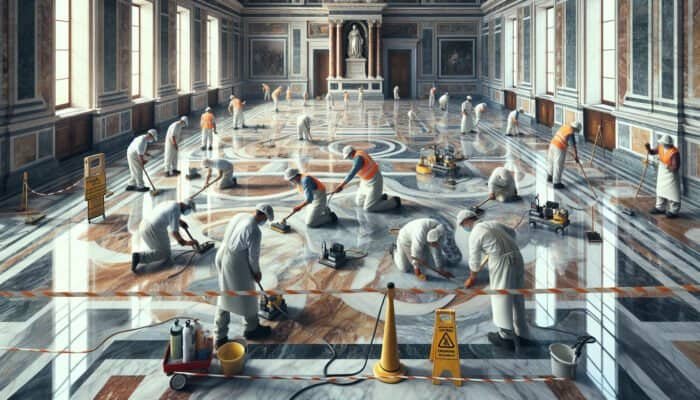
A prominent example of marble restoration can be observed in the ongoing initiatives at Buckingham Palace, where the marble floors require constant attention due to their historical significance and high levels of foot traffic. The restoration techniques employed here involve meticulous cleaning to eliminate years of accumulated grime and stains, followed by honing to restore the marble’s flawless surface. Additionally, restoration specialists contend with unique challenges, such as ensuring the palace’s historical accuracy while integrating modern cleaning technologies. By committing to these restoration efforts, Buckingham Palace not only preserves its regal appearance but also guarantees the safety and comfort of its visitors, serving as a prime example of effective marble restoration.
Meticulous Restoration Techniques at Westminster Abbey
The restoration of marble floors within Westminster Abbey epitomises a dedication to historical authenticity. The Abbey’s significance necessitates an exhaustive examination of the restoration methods applied. This undertaking involved extensive research into the original materials and techniques employed, guaranteeing that the restoration aligns seamlessly with the Abbey’s storied past. This case exemplifies the delicate balance of preserving authenticity whilst conducting restoration work. The project’s success underscores the importance of restoring the marble floors within the broader context of cultural heritage preservation, highlighting the necessity to protect our historical landmarks for future generations.
Innovative Approaches to Restoration at The British Museum
At the British Museum, the restoration of marble floors presents distinct challenges and opportunities. The museum’s commitment to public accessibility necessitates that restoration work occurs in ways that minimally disrupt visitors. Innovative strategies, such as the application of non-invasive cleaning methods and temporary flooring solutions, have been successfully implemented to achieve this objective. This approach ensures that the museum remains operational while its marble floors undergo essential restoration. The British Museum’s efforts exemplify how the restoration of marble can harmoniously coexist with modern public engagement, facilitating both preservation and accessibility within one of the UK’s most cherished cultural institutions.
Key Guidelines for Selecting the Most Suitable Marble Restoration Company
Evaluating Accreditation and Professional Experience
Choosing the appropriate restoration company is critical for the success of any marble restoration project. Accreditation is a key consideration, as it guarantees that the company adheres to established industry standards and best practices. In the UK, organisations such as the Stone Federation Great Britain provide accreditation that signifies a company’s commitment to quality and professionalism. Experience is equally vital; firms with a proven track record in marble restoration possess a nuanced understanding of the various types of marble and the unique challenges encountered in different environments. By prioritising accredited and experienced professionals, clients can ensure that the restoration of the marble is executed to the highest standards of excellence.
Scrutinising Restoration Techniques and Equipment
When evaluating potential restoration companies, it is vital to scrutinise the techniques and equipment they utilise. Modern restoration necessitates specialised tools and innovative methods to achieve optimal results. Companies that invest in advanced equipment, such as diamond polishing pads and sophisticated cleaning systems, can deliver superior outcomes compared to those relying on outdated techniques. This modernisation not only enhances the quality of restoration but also mitigates the risk of damage to the marble surfaces. Understanding the equipment and techniques employed by a prospective company will ensure that the selected specialists are well-prepared to tackle the complexities of restoring marble floors at Modern Park, particularly in areas that require extensive repair.
The Importance of Customer Testimonials and Detailed Case Studies
Customer testimonials and case studies are invaluable resources for assessing the reputation of marble restoration companies. Positive feedback from previous clients can provide critical insights into the quality of work and customer service. Furthermore, comprehensive case studies that detail specific projects—including challenges faced and solutions implemented—can effectively showcase the company’s capabilities. By examining these factors, clients can make informed decisions when selecting a restoration partner, ensuring that their project will be managed with diligence and expertise. This thoroughness is particularly crucial for significant projects, such as the restoration of marble in Modern Park, where the stakes are notably high.
Understanding the Financial Considerations of Marble Restoration
Key Factors Influencing Restoration Costs
Understanding the various elements that influence marble restoration costs is vital for effective financial planning. The extent of damage is a primary factor; minor cleaning and honing are typically less expensive than extensive repairs that may necessitate the replacement of damaged sections. Additionally, geographical location within the UK can affect pricing due to regional variations in labour and materials. The type of marble also plays a significant role; rare or exotic varieties may require specialised care, leading to increased overall expenses. By recognising these variables, clients can better prepare financially for the restoration of Marble in Morden Park, ensuring they allocate adequate resources to achieve the desired outcomes.
Strategic Financial Planning for Restoration Initiatives
Establishing a budget for marble restoration projects necessitates careful planning and thorough evaluation of potential costs. Begin by soliciting quotes from multiple restoration companies, ensuring that you receive a detailed breakdown of the services they offer. This transparency facilitates accurate comparisons and helps identify any hidden expenses. It is also prudent to include a contingency fund within your budget to accommodate unforeseen complications that may arise during the restoration process. By proactively budgeting for the restoration of Marble in Morden Park, clients can minimise financial surprises and ensure a smoother restoration experience.
Evaluating Cost Versus Value in Restoration Projects
When contemplating the costs associated with marble restoration, it is essential to assess the financial investment in relation to the value it adds to the property. Restored marble floors not only elevate the aesthetic appeal of a space but also contribute to its overall property value. A well-executed restoration can significantly enhance property desirability, making it a prudent investment for both homeowners and business proprietors. Furthermore, the long-term advantages of maintaining marble surfaces through restoration—as opposed to neglect—can yield substantial savings by preventing more severe damage that necessitates costly repairs. This cost-versus-value assessment is particularly relevant for significant projects like the restoration of Marble in Modern Park, where the benefits can far exceed the initial expenditures.
Essential Post-Restoration Maintenance for Marble Floors
Establishing Regular Cleaning Protocols
Upon successfully restoring marble floors, implementing a regular cleaning schedule is crucial for maintaining their beauty and longevity. Routine maintenance should involve using gentle, pH-neutral cleaning agents specifically designed for marble, avoiding harsh chemicals that could potentially harm the surface. Daily sweeping or dust mopping is critical to prevent dirt and debris from scratching the marble, while periodic deep cleaning can refresh its appearance. By adopting these consistent cleaning practices, you not only maintain the results of the restoration of Marble in Modern Park but also enhance the overall visual appeal of the area.
Implementing Preventive Measures for Marble Surfaces
Preventive strategies are vital in safeguarding marble floors against future damage. The application of protective coatings or sealants can create an effective barrier against stains, moisture, and dirt, thus preserving the surface from adverse effects. Furthermore, placing mats at entrances and in high-traffic areas can significantly reduce the amount of grit and grime that makes contact with the marble. Educating residents and visitors about best practices, such as using coasters for beverages and promptly cleaning up spills, further contributes to the longevity of the marble. By adopting these preventive measures, the risk of damage is significantly diminished, ensuring that the restoration of the marble in Modern Park for damaged floors remains intact for many years to come.
Engaging Professional Maintenance Services for Optimal Upkeep
Utilising professional maintenance services can be a wise investment for the ongoing care of restored marble floors. These specialists possess the expertise and knowledge necessary to conduct routine maintenance tasks, including polishing and sealing, to keep the marble in immaculate condition. They can also provide valuable insights into the specific requirements of the marble type and the environment in which it is located, ensuring tailored care is delivered. By engaging professional services, property owners can enhance the effectiveness of their maintenance efforts and prolong the lifespan of their marble floors, making it a crucial aspect of maintaining Marble in Modern Park.
Conducting Regular Inspections for Proactive Care
Performing routine inspections of restored marble floors is essential for identifying potential issues before they escalate into more serious concerns. Regular evaluations allow professionals to assess the condition of the marble, identifying any signs of wear, discolouration, or damage. This proactive approach enables timely interventions, thereby preserving the integrity of the restoration work. Moreover, regular inspections can provide invaluable feedback on the effectiveness of cleaning and maintenance practices, facilitating necessary adjustments. By prioritising routine inspections, property owners can ensure that the restoration of Marble in Modern Park continues to yield outstanding results long after the initial work is completed.
Learning Repair and Restoration Techniques for Ongoing Maintenance
In the event of future damage, familiarity with repair and restoration techniques is essential for maintaining the marble’s original allure. Techniques such as filling cracks with epoxy, re-polishing dull areas, and re-honing surfaces can effectively restore the marble to its former glory. It is important for property owners to be knowledgeable about these methods and to engage professionals capable of executing them proficiently. Acting swiftly to rectify damage not only preserves the aesthetic appeal but also prevents further deterioration, ensuring that the restoration of Marble in Modern Park remains a source of pride for many years.
Assessing the Environmental Impact of Marble Restoration Practices
Adopting Sustainable Strategies in Restoration Processes
Environmental sustainability in marble restoration is gaining significant traction across the UK. Many restoration companies are embracing eco-friendly practices, such as utilising biodegradable cleaning agents and sustainable materials during the restoration process. These environmentally responsible approaches not only help to maintain the integrity of the marble but also reduce the ecological footprint of restoration projects. For instance, implementing water-efficient cleaning techniques lessens water usage during the restoration of Marble in Morden Park, aligning with broader sustainability objectives in the UK. By prioritising these practices, the marble restoration industry can make a positive impact on environmental conservation.
Executing Effective Waste Management Strategies
Efficient waste management is a critical aspect of any restoration project. In the UK, restoration companies are increasingly adopting strategies aimed at minimising waste generated during marble restoration. This includes recycling materials whenever feasible and disposing of hazardous waste in accordance with local regulations. By actively managing waste, these companies not only contribute to environmental sustainability but also enhance their reputation among eco-conscious clients. The commitment to responsible waste management practices is essential for preserving the integrity of projects like the restoration of Marble in Morden Park, ensuring that they have a minimal environmental impact.
Mitigating Carbon Emissions in Restoration Activities
The carbon emissions associated with marble restoration processes are a crucial consideration in today’s environmentally conscious landscape. Restoration companies in the UK are exploring strategies to reduce their carbon footprint, such as employing energy-efficient machinery and sourcing local materials, which decreases transportation-related emissions. Additionally, integrating green technologies can further minimise environmental impact. By proactively addressing carbon emissions, these companies contribute to a more sustainable future while enhancing the attractiveness of their services. This focus on reducing carbon footprints is particularly significant for extensive projects, such as the restoration of Marble in Morden Park, where environmental implications can be substantial.
Reducing Water Consumption in Restoration Efforts
Water usage is another critical aspect of the environmental impact of marble restoration. Companies are adopting methods to minimise water consumption during cleaning and restoration processes. Techniques like steam cleaning require less water than traditional methods while still achieving effective results without harming the marble. Implementing water-saving technologies can significantly aid in reducing overall water consumption and enhancing sustainability initiatives. For the restoration of Marble in Morden Park, reducing water usage not only conserves this valuable resource but also aligns with broader environmental goals in the UK.
Addressing Biodiversity Concerns During Restoration Activities
The effects of marble restoration activities on local ecosystems and biodiversity are often overlooked. Restoration projects involving outdoor marble installations must consider their potential impact on surrounding flora and fauna. To mitigate any adverse effects, restoration companies are increasingly adopting eco-friendly practices that protect local ecosystems. By employing responsible strategies, such as using non-toxic materials and preserving natural habitats during restoration, they can ensure that the restoration of Marble in Morden Park contributes positively to biodiversity conservation efforts. This holistic approach enhances both the sustainability of the restoration industry and the environment as a whole.
Forecasting Future Developments in Marble Restoration
Harnessing Technological Innovations in Restoration Practices
The future of marble restoration in the UK is poised to benefit from rapid technological advancements. Innovations such as 3D scanning and artificial intelligence are beginning to reshape restoration practices. These cutting-edge technologies allow restoration professionals to assess damage with greater accuracy and formulate tailored restoration plans that optimise results. Furthermore, advancements in cleaning technology, including automated systems, are simplifying the maintenance of marble surfaces. As these technologies become more prevalent, they promise to enhance the effectiveness and precision of restoring marble in Modern Park, ushering in a new era within the industry.
Striking a Balance Between Preservation and Modernisation
A crucial discussion within the realm of marble restoration revolves around the balance between preservation and modernisation. As restoration techniques continue to advance, there is a growing inclination to integrate modern elements that may compromise historical authenticity. The challenge lies in discovering innovative solutions that honour the original design while accommodating contemporary functionality. This dialogue is particularly pertinent to projects such as the restoration of Marble in Morden Park, where professionals must navigate the fine line between preserving heritage and introducing modern enhancements. Achieving this balance is essential for maintaining the integrity of historical sites while ensuring their relevance in today’s society.
Enhancing Education and Training for Restoration Professionals
As the marble restoration industry evolves, the significance of education and training for professionals cannot be overstated. Advanced training initiatives and workshops focusing on new restoration techniques, materials, and technologies are critical for equipping professionals with the skills to meet modern challenges. Educational partnerships with universities and industry organisations can nurture a new generation of skilled restorers dedicated to excellence. Ensuring that professionals are well-versed in evolving practices will ultimately enhance the quality of projects, such as the restoration of marble in Modern Park, benefiting the entire industry.
Advancing Sustainability in Marble Restoration Practices
In the future, sustainability will continue to play a pivotal role in shaping the landscape of marble restoration. The industry is likely to see an increasing emphasis on eco-friendly practices, ranging from the materials used to the techniques employed. Restoration companies that prioritise sustainable approaches will not only attract environmentally conscious consumers but also contribute to broader environmental objectives. This commitment to sustainability is especially relevant for significant projects like the restoration of Marble in Morden Park, where the preservation of both heritage and the environment is of utmost importance. As these trends develop, the marble restoration industry will establish itself as a leader in sustainable practices.
Frequently Asked Questions About Marble Restoration
What does the marble restoration process entail?
Marble restoration encompasses the repair, cleaning, and polishing of marble surfaces to return them to their original beauty and functionality, often addressing damage resulting from wear and tear.
Why is marble restoration considered essential?
Restoration is vital for preserving the aesthetic and structural integrity of marble, maintaining its historical value, and extending its lifespan.
How can I safeguard my marble floors from damage?
Regular cleaning, applying protective coatings, and avoiding harsh chemicals can significantly help prevent damage to marble floors.
Which techniques are commonly utilized in marble restoration?
Standard techniques include cleaning, honing, polishing, and repairing cracks or chips with epoxy fillers.
What is the typical expense associated with marble restoration?
Costs vary based on damage extent, marble type, and project location, with minor repairs generally being less expensive than extensive restoration projects.
How long does the marble restoration process usually take?
The duration of marble restoration can vary significantly, ranging from a few hours for simple cleaning to several days for comprehensive restoration efforts.
Can I perform marble restoration on my own?
While homeowners can handle minor cleaning, professional restoration is recommended for significant damage to guarantee quality results.
What should I consider when selecting a restoration company?
Choose a company with appropriate accreditation, experience in marble restoration, and positive customer feedback to ensure high-quality work.
How frequently should I have my marble floors restored?
The frequency depends on foot traffic and wear; however, evaluating marble floors annually can help determine when restoration is necessary.
What sustainable practices are utilized in marble restoration?
Sustainable practices include using eco-friendly cleaning agents, reducing water usage, and responsibly managing waste generated during the restoration process.
The post Restoration of Marble In Morden Park for Damaged Floors appeared first on https://tilecleaningsurrey.co.uk
The Article Marble Restoration for Damaged Floors in Morden Park appeared first on https://fabritec.org
The Article Marble Restoration Services for Damaged Floors in Morden Park Was Found On https://limitsofstrategy.com
